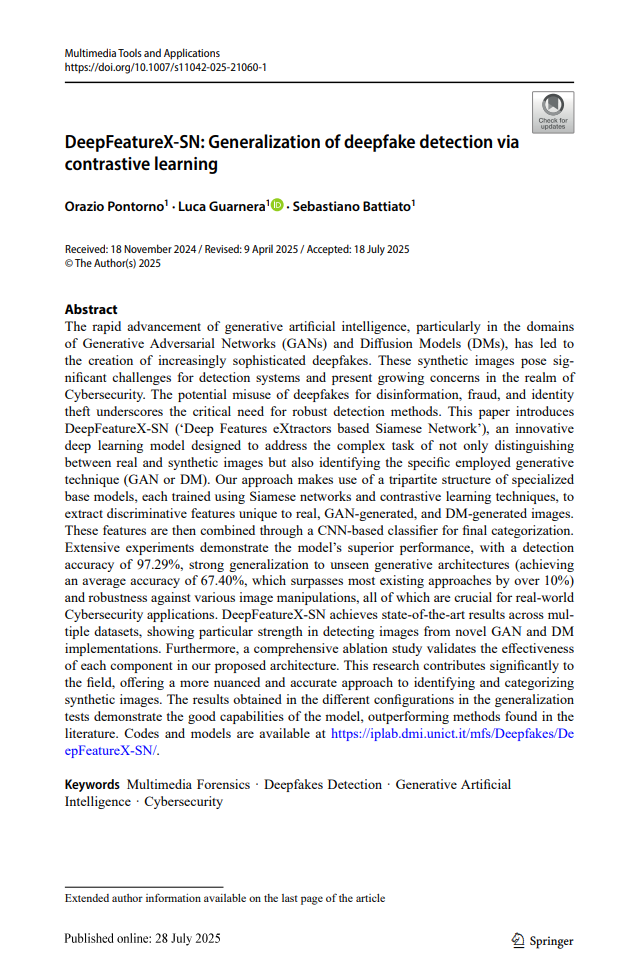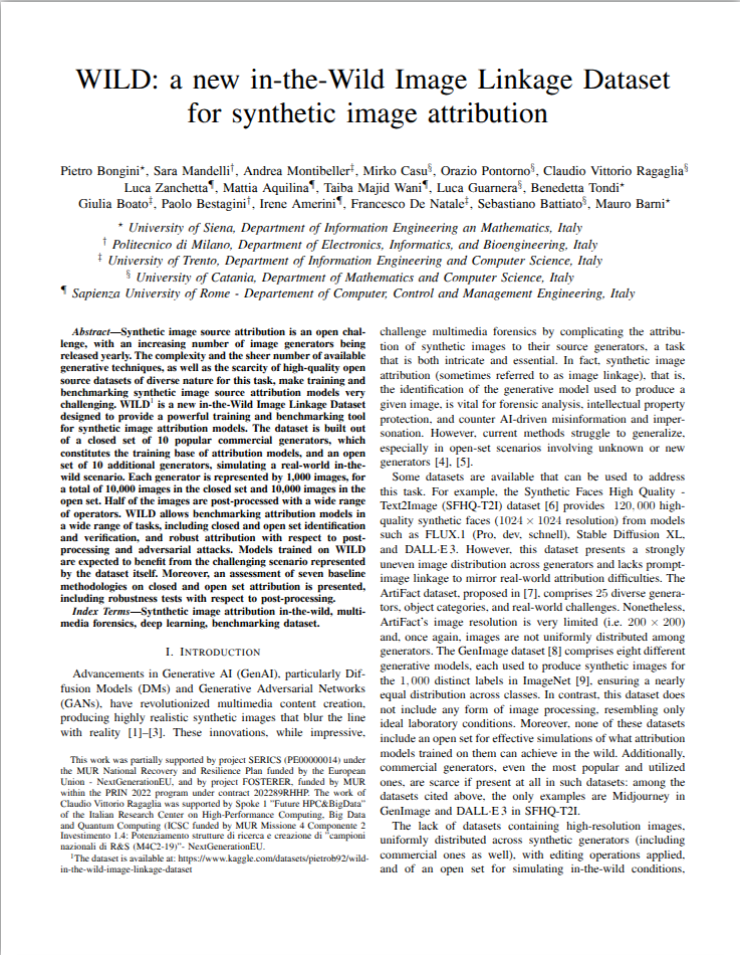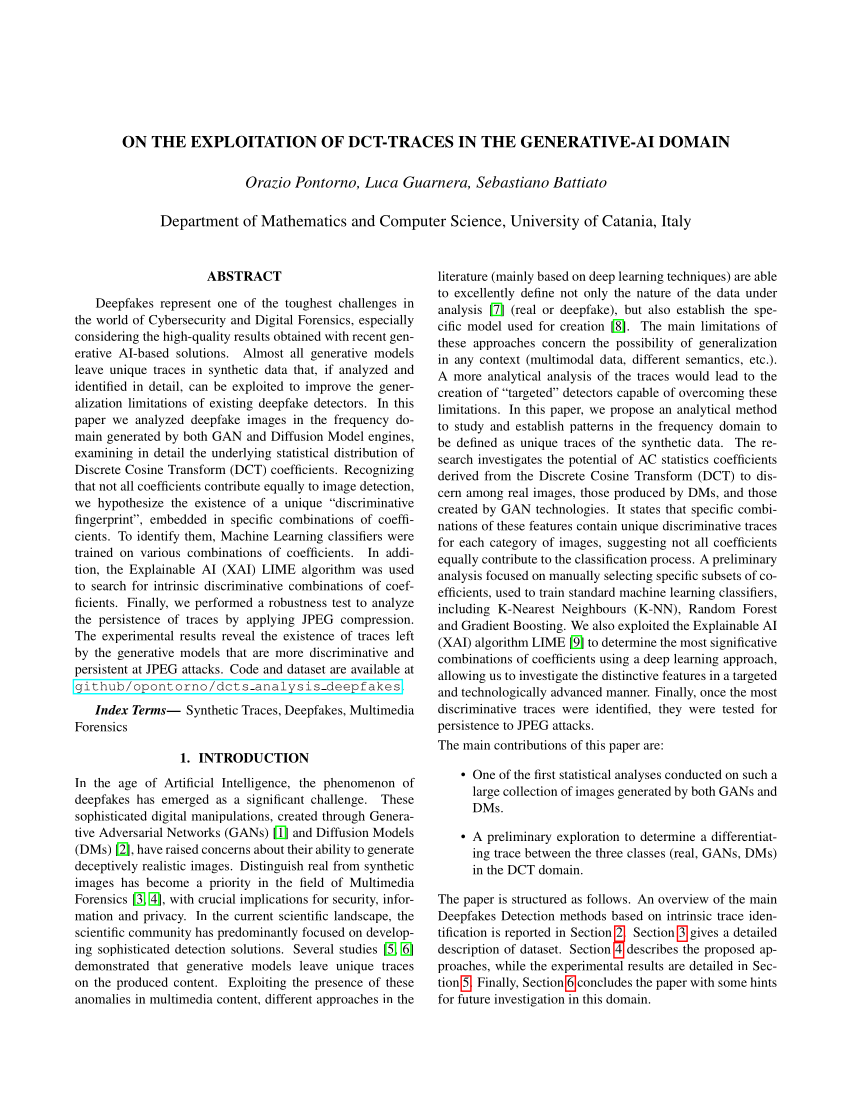Curriculum Vitae
Biography
Currently pioneering as an AI Researcher at Life360, where I focus on developing innovative machine learning solutions to enhance advertising strategies. I am also pursuing a PhD in Artificial Intelligence at Università Campus Bio-Medico di Roma. My work bridges academic research and industry applications, with a strong interest in advancing AI technologies.
About Me
Birthday : 13 Oct 1999
Email : orazio.pontorno@phd.unict.it
City : Catania, Italy
Languages : Italian, English
Interests : Chess, Fitness, Travel
Skills
Machine Learning
Applied Mathematics
Big Data/Data Analysis
Data Engineering
Digital Skills
Pytorch
Tensorflow
R
MySQL
Education
11/2023 - today
Ph.D. in Artificial Intelligence
Università Campus Bio-Medico, Rome, Italy
University of Catania, Catania, Italy
10/2021 - 09/2023
Master's degree in Data Sceince
University of Catania, Catania, Italy
Grade: 110/110 summa cum laude
Thesis: An AI Forensics approach for the recognition of synthetic image-generating architecture based on diffusion models
09/2022 - 11/2022
Postgraduate School Course in AI: Deep Learning, Vision and Language for Industry
Università degli Studi di Modena e Reggio Emilia, Modena, Italy
Final Project: An AI-based system for Traffic lights recognition
09/2018 - 12/2021
Bachelor's degree in Mathematics
University of Catania, Catania, Italy
Grade: 105/110
Thesis: Teoria dei Codici: Codici Lineari
Experience
03/2025 - today
AI Researcher
Life360 · Full Time
Research and develop cutting-edge ML models for personalized ad experiences and contextual targeting. Explore deep learning, reinforcement learning, and NLP for innovative ad solutions.
04/2024 - 02/2025
Data Scientist
Fantix Inc. · Contract
Research and development of enrichment models based on Machine Learning systems.
04/2023 - 06/2023
Student Research Assistant
iCTLab s.r.l. · Internship
Research activities aimed at developing deep learning algorithms in the field of Deepfakes Analysis and Detection.
02/2023 - 08/2023
Research Assistant
Vicosystems s.r.l. · Scholarship
Analysis and implementation of deep learning techniques based on GAN networks for anomaly detection in a time-series dataset.
Activities
Publications

DeepFeatureX-SN: Generalization of deepfake detection via contrastive learning

WILD: a new in-the-Wild Image Linkage Dataset for synthetic image attribution

DeepFeatureX Net: Deep Features eXtractors based Network for discriminating synthetic from real images

